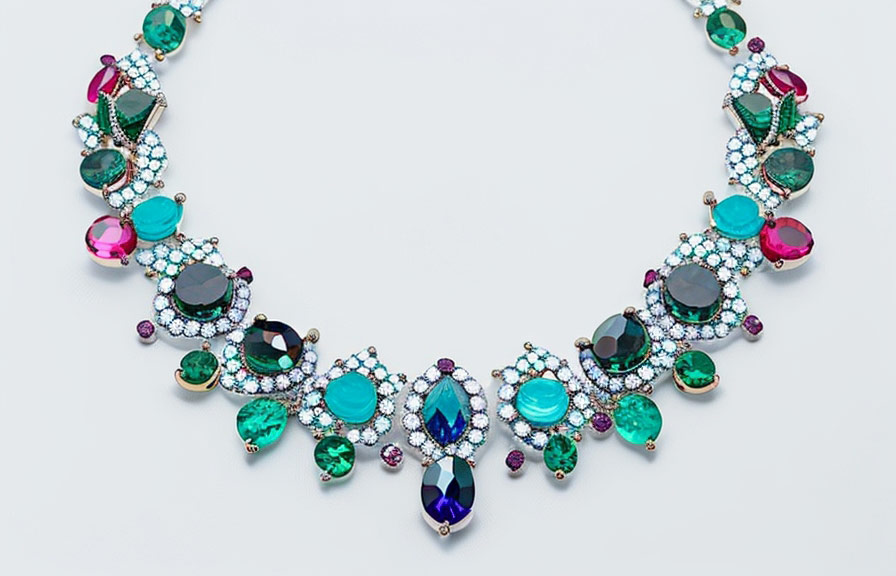Did you know that the first instances of jewelry editing can be traced back to the early renaissance? it's true! artisans and craftsmen meticulously retouched paintings to enhance the appearance of gemstones and precious metals. fast forward to today, and jewelry retouching has become an integral part of the digital
Photography process, making our beloved accessories shine brighter than ever.

In this blog post, we'll take a closer look at the fascinating history of jewelry retouching and reveal the secret techniques that make editing jewelry photos a true art form. let's dive in!
A glimpse into the past: the origins of jewelry retouching
Believe it or not, the practice of retouching jewelry photos has deep roots in the world of art, dating back to the 15th century. during the renaissance, artists like leonardo da vinci and sandro botticelli were known to use their skills to enhance the appearance of jewels and metals in
Their paintings. this early form of retouching jewelry photos helped create the illusion of realistic, radiant gems on canvas.
As photography emerged in the 19th century, the need for specialized jewelry editing techniques grew. photographers began to experiment with different methods to capture the true beauty of their subjects, such as using natural light and adjusting exposure times.
With the advent of digital photography and image editing software in the late 20th century, the art of retouching jewelry photos entered a new era of precision and creativity.
The modern world of jewelry editing: the secrets
Today, professional photographers and retouchers harness the power of cutting-edge tools and software to enhance the appearance of jewelry in photos. let's take a closer look at some of the key techniques used in modern jewelry editing:
- color correction: this is an essential step in the editing process. retouchers adjust the color balance, saturation, and brightness of the image to ensure that the jewelry's true colors shine through.
- background removal: to showcase the jewelry without any distractions, retouchers often remove the background of the photo, replacing it with a solid color or transparent layer.
- scratch and dust removal: even the tiniest imperfections can detract from the beauty of a piece of jewelry. that's why retouchers meticulously remove any visible scratches, dust, or blemishes from the gems and metals.
- gemstone enhancement: to make gemstones appear more vibrant and lustrous, retouchers often use a combination of techniques, such as dodging (brightening) and burning (darkening) specific areas of the stone, as well as adding highlights and reflections.
- metal polishing: retouchers also work on the metal parts of the jewelry, enhancing their shine and luster by adjusting contrast, sharpness, and highlights.
The art of accessories: bringing jewelry to life
While the primary focus of jewelry editing is often on rings, necklaces, and earrings, retouchers also apply their skills to other accessories, such as watches, cufflinks, and hair ornaments. in each case, the goal is to create a striking, visually appealing image that showcases the accessory's unique features and craftsmanship.
This might involve adjusting the focus, creating a sense of depth, or playing with light and shadows to emphasize certain details.
A fun fact: the world's most valuable gemstones
Did you know that some of the world's most valuable gemstones have been retouched in photos to truly capture their breathtaking beauty? for example, the hope diamond, a stunning 45.52-carat blue diamond, has been photographed and retouched multiple times to showcase its mesmerizing color and exceptional clarity.
Another fascinating example is the graff pink, a rare 24.78-carat pink diamond that sold for a staggering $46.2 million in 2010. the images of this exquisite gem have been carefully retouched to highlight its unique hue and stunning sparkle.
The future of jewelry retouching: embracing innovation
As technology continues to evolve, so do the techniques and tools used in jewelry editing. artificial intelligence (ai) and machine learning are beginning to play a role in the retouching process, automating certain tasks and allowing retouchers to focus on more intricate details.
We can also expect to see more interactive and immersive jewelry photos, thanks to advancements in virtual reality (vr) and augmented reality (ar).
Conclusion
The art of retouching jewelry photos has come a long way since its humble beginnings in the renaissance. from meticulously crafted paintings to digitally enhanced photographs, the desire to showcase the beauty of gems and precious metals has remained constant.
As we continue to push the boundaries of technology and creativity, there's no doubt that the future of jewelry editing will be filled with even more dazzling innovations.
